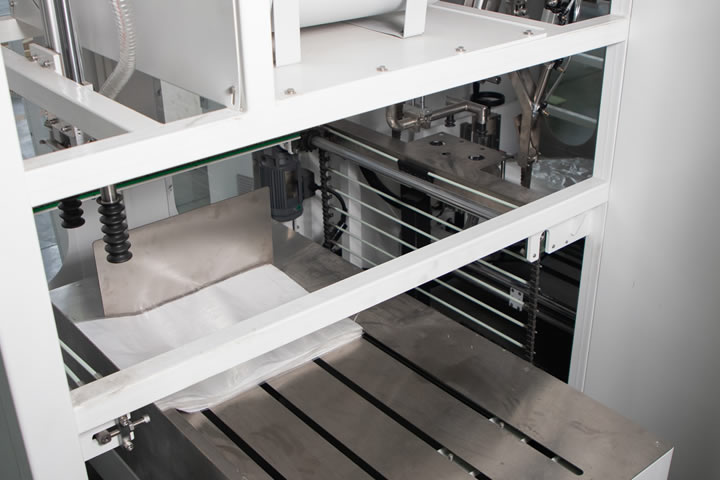In an industrial zone outside Hanoi, in a factory filled with the fragrance of rice, piles of 5kg rice bags are being hurriedly moved off the production line by workers. The workshop director stared at the stagnant vacuum packaging line and wiped the sweat from his forehead - European customers temporarily changed the 1-ton container order to 200g boutique small packages, and the traditional equipment needed to be disassembled and reorganized, which meant at least 4 days of production loss.
Emergency brake of traditional production line
This rice milling company with an annual output of 200,000 tons has repeatedly missed orders due to the fixed specifications of the vacuum packaging machine. When its original equipment switched to packaging mode, it was necessary to manually adjust 7 modules such as the feeding track and vacuum chamber size, and only debugging required 3 engineers to work together. What's more tricky is that the different requirements for nitrogen filling volume for different specifications of packaging often lead to 5% leakage and defective products on the first day of trial production.
The turning point came in the 72nd hour of the introduction of the new Vietnamese rice vacuum packaging machine. After the technical team inputs the new order parameters on the equipment control screen, the barcode scanner automatically reads the RFID tag of the packaging bag, and 12 sets of servo motors immediately start adaptive adjustment. The mold rack that originally needed to be disassembled now achieves millimeter-level displacement through the hydraulic push rod; the vacuum pump accurately compresses the vacuuming time from 15 seconds to 9 seconds according to the thickness of the 200g bag.

Silent production line revolution
In the workshop late at night, the vacuum detector with flashing blue light becomes the only "supervisor". The newly put into production Vietnamese rice vacuum packaging machine is showing its core advantages: the dual-chamber alternating operation system allows chamber 1 to process small bag packaging while chamber 2 is preheated and on standby, and the switching interval is reset from 45 minutes to zero. What is even more surprising is that the built-in AI vision system of the equipment captured the abnormal moisture content of a batch of rice grains and actively lowered the sealing temperature by 8°C, avoiding the risk of cracking of the sealing edges of 300 packaging bags.
"Now receiving urgent orders has become our competitive advantage." The workshop director pointed to the data on the monitoring screen: the time required for specification switching has been reduced from 26 hours to 20 minutes, and the order response speed has increased to three times that of peers. The 300-square-meter warehouse where the adjustment parts were originally stacked has now been transformed into a temporary storage area, and the annual logistics turnover cost savings can cover the cost of upgrading the entire production line.
Industry Ripple Effect
As this case spreads in the Vietnamese food processing industry, more and more companies are beginning to pay attention to customized solutions for packaging machinery. A competitor once sent someone to visit the factory disguised as a buyer, but was stumped by a set of special laser codes on the equipment casing - that is a dynamic anti-counterfeiting mark designed to prevent technical plagiarism, and the verification logic is updated daily by the cloud.
Today, the inventory of empty packaging bags in the rice mill has dropped to a historical low, and the production schedule on the wall of the workshop has been upgraded from handwritten notes to electronic billboards. When a German customer sent an urgently revised design drawing of 500g organic rice packaging late at night, the engineer on duty tapped the touch screen, and the Vietnamese rice vacuum packaging machine quietly began a new round of self-reinvention under the moonlight.

